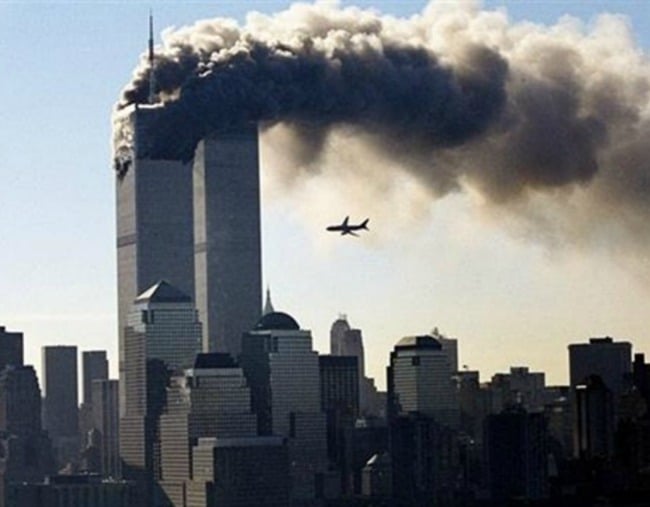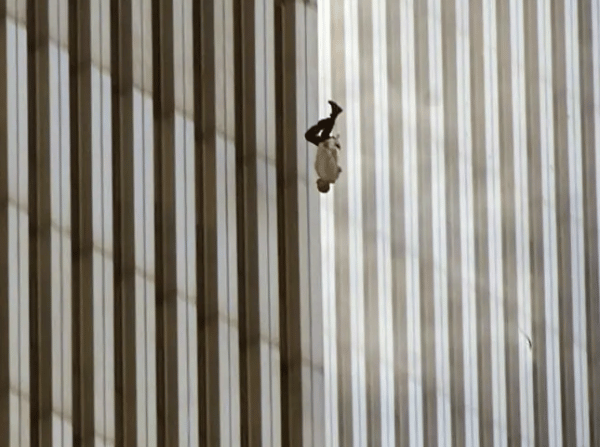
Warning: This post contains distressing subject matter and images that will not be appropriate for all readers.
As New Yorkers stood, watching the apocalyptic scene of the North and the South World Trade Centers collapse before them, their eyes were drawn to unusual movement.
Debris, perhaps.
From the windows of both towers, onlookers noticed objects – one by one – falling from windows.
As it dawned on those below what they were likely witnessing, a mother is said to have whispered to her child, “Maybe they’re just birds, honey.”
Moments later a woman cried, “God! Save their souls! They’re jumping! Oh, please God! Save their souls!”
They were not objects, bystanders realised. And they certainly weren’t birds. They were people.
And ‘jumped’, according to the New York Medical Examiner’s Office, is not the right word.
“We don’t like to say they jumped,” the office told Esquire magazine in 2016. “They didn’t jump. Nobody jumped. They were forced out.”
And they were forced out almost immediately after the first plane hit. They were fleeing fire, or smoke which threatened to suffocate them. They were fleeing collapsing ceilings and floors, which threatened to crush them. They were attempting to escape death – not succumb to it.
Video cameras documented the falling towers, a visual metaphor for an attack on freedom and liberty.


Top Comments
After that morning everything changed, even after 17 years you can still sense that. I was 28 years old and it was an event that shaped my adulthood. The fear of ‘what’s going to happen now?” in the proceeding days after 9/11 I’ll never forget.
The unknown soldier, I like that analogy.
I will never, ever forget this. I was pregnant with my first child and I knew the world he was going to be born into was going to be different from that moment.